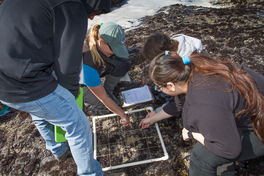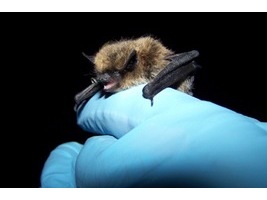Search for *:* returned 2,149 results.
-
Biodiversity Science project: Grand Canyon Monitoring and Research Center
Collecting samples of aquatic insects from the remote Grand Canyon segment of the Colorado River is challenging and extremely expensive. We seek citizen scientists to help us collect samples of the adult life stages of aquatic insects that are emerging from the Colorado River in Grand Canyon using simple light traps that are set out each night in camp. We will provide sampling gear and notebooks.

-
Biodiversity Science project: Watch the Wild
Watch the Wild™ needs your help. As a Watch the Wild™ volunteer, you observe and report the "wild" in your community, from trees and plants to lakes and streams to weather and wildlife activity. In as little as ten minutes, your observations help us to understand how our eco-systems are changing and helps us to adapt for the future. Your observations will be entered into a database and shared with interested scientists.

-
Biodiversity Science project: Season Spotter
We invite you to join Season Spotter, where you can help with an ongoing climate change research project. We have over 250 digital cameras mounted on towers and platforms across North America (and beyond) taking continual images of vegetated landscapes including forests, grasslands, and croplands. The result is images – a lot of images – that provide a unique record of how plants respond to seasonal change including the timing of leafing, flowering, and fruiting...

-
Biodiversity Science project: Cape Tulip (Moraea flaccida and Moraea miniata) in Wyndham
For residents & visitors of Wyndham, specifically rural landholders, to help identify and map populations of the poisonous Cape Tulip. More information on Two-leaf Cape Tulip can be found here: https://agriculture.vic.gov.au/biosecurity/weeds/priority-weeds/cape-tulip-twoleaf More information on One-leaf Cape Tulip can be found here: https://agriculture.vic.gov.au/biosecurity/weeds/priority-weeds/cape-tulip-oneleaf
-
Biodiversity Science project: Baranduda Nest Box Project
Over 250 Nest Boxes have been placed in the Baranduda Landcare precinct which support a range of endangered mammals such as the squirrel glider and tuan.

-
Biodiversity Science project: LiMPETS
LiMPETS (Long-term Monitoring Program and Experiential Training for Students) is an environmental monitoring and education program for students, educators, and volunteer groups. This hands-on program was developed to monitor the ocean and coastal ecosystems of California’s National Marine Sanctuaries to increase awareness and stewardship of these important areas...

-
Biodiversity Science project: Cairns Esplanade BioBlitz 2015
The Cairns Esplanade Bioblitz is a public hands-on citizen science event teaming volunteers with expert scientists and enthusiasts to observe, capture or photograph the local plant and wild life. Hundreds of people are able to contribute to the “citizen science” collection of data which creates a comprehensive picture of the biodiversity of the selected area...

-
Biodiversity Science project: Einstein@Home
Einstein@Home uses your computer's idle time to search for weak astrophysical signals from spinning neutron stars (also called pulsars) using data from the LIGO gravitational-wave detectors, the Arecibo and Parkes radio telescopes, and the Fermi gamma-ray satellite. Einstein@Home is a World Year of Physics 2005 and an International Year of Astronomy 2009 project supported by the American Physical Society (APS) and by a number of international organizations...

-
Biodiversity Science project: The Delaware Bay Horseshoe Crab Survey
Imported from SciStarter
-
Biodiversity Science project: Brown Bag Lunch Series - Bats in Acadia and Maine
Until a few years ago, Acadia National Park and mid-coast Maine were home to several species of bats that were present each year from late spring through fall. Five years ago the once common hibernating bat species became inflicted with the cold-loving fungus Pseudogymnoascus destructans (Pd) or White Nose Syndrome (WNS) marking the start of a precipitous decline in these populations...
